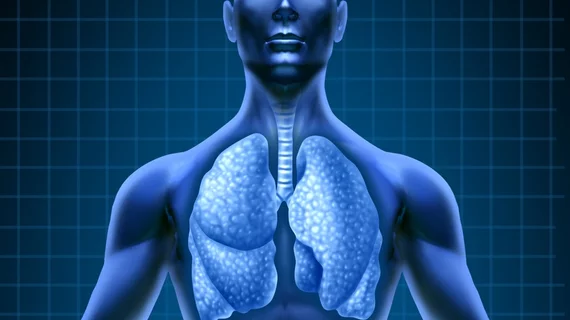Study: Frequent lung cancer CT screening doesn't improve survival rate
More frequent surveillance imaging does not improve overall survival or post-recurrence survival for patients with non-small cell lung cancer (NSCLC), according to research published in the October issue of Annals of Surgery.
Researchers led by Benjamin D. Kozower, MD, a professor in the Division of Cardiothoracic Surgery at Washington University School of Medicine in St. Louis, aimed to improve how physicians go about surveillance recommendations and how often they should see their NSCLC patients who are doing well.
The researchers analyzed data from up to 10 patients from each Commission on Cancer (CoC)-accredited facility who underwent operations and treatment for stages I-III NSCLC between January 2006 and December 2007. The patients were then monitored through December 2012 or until the first diagnosis of recurrence, new primary cancer or death.
Registry staff abstracted information on perioperative comorbidity, postoperative imaging and its indication, first lung cancer recurrence and diagnosis of new primary cancer. Staff members also obtained records from outside the facility where initial data entry occurred, according to the researchers.
Kozower and colleagues used imaging history and surveillance indication data to place patients surveilled with CT scans into three intensity groups: three-month (1,614 patients), six-month (1,999 patients), and annual (850 patients).
Study findings included the following:
- In a parallel regression comparing the 3,165 patients in the three-month and six-month groups who were alive and cancer-free nine months after their operations, more frequent surveillance showed no survival benefit.
- Roughly 11 percent of patients developed a new primary cancer, 28.9 percent experienced a recurrence. These rates were consistent between the two groups.
- More recent pre-recurrence imaging was not associated with post-recurrence survival, and patients who had gone more than 14 months without imaging were at no greater risk of death.
“Patients really believe that if they see a physician every three months for their CT scan, that if they have a cancer recurrence, we’ll be able to find it very early and make it go away. Unfortunately, in the majority of cases for lung cancer recurrence, that’s not the case,” Kozower said in a prepared statement. “Lung cancer recurrence has a poor prognosis, so the idea that finding it early means a physician can successfully treat it does not hold true.”
Overall, the researchers recommended NSCLC survivors have at least an annual CT scan and that having surveillance imaging more frequent than every six months offers no additional benefit.

